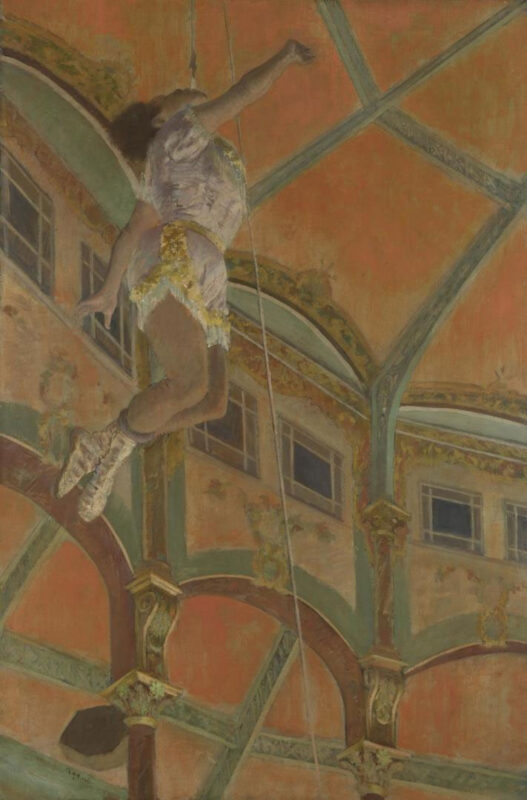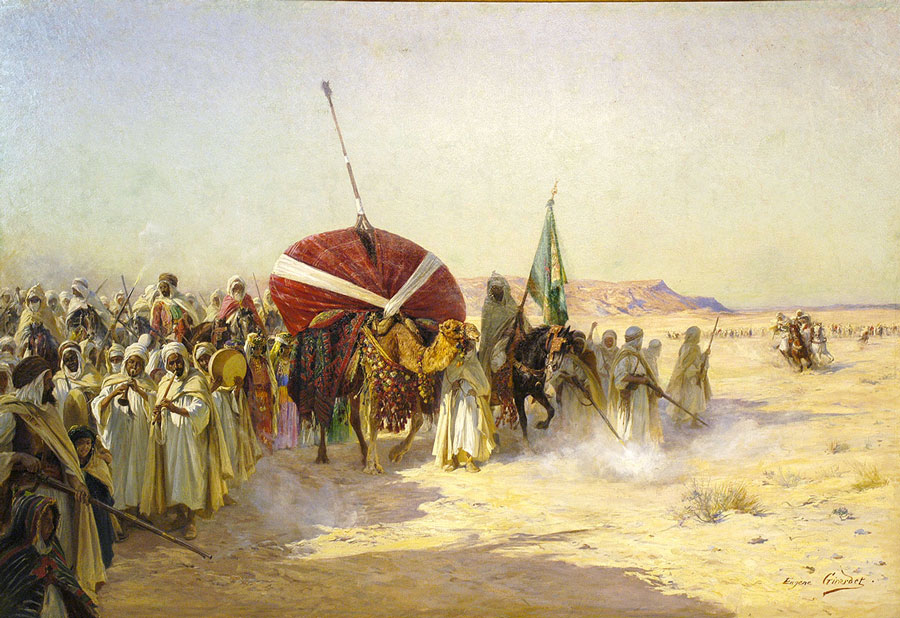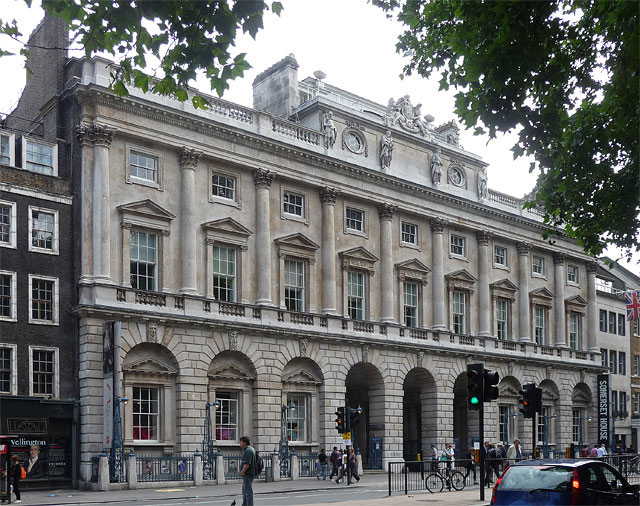Degas & Miss La La: art and identity at the National Gallery

From 6 June to 1 September 2024, the the National Gallery in London presents “Degas & Miss La La”, an exhibition that takes a closer look at Degas’ “Miss La La at the Cirque Fernando” (1879)
Source: National Gallery, London · Image: Edgar Degas, “Miss La La at the Cirque Fernando” (1879)
This landmark Impressionist painting records an extraordinary moment and features a remarkable sitter – the circus artist Miss La La, or Anna Albertine Olga Brown (1858‒1945). This exhibition takes a closer look at Degas’ painting and reveals new information about her life and career to the public for the first time.
In January 1879 French painter Edgar Degas attends performances at the newly built Cirque Fernando in Paris. There, he is mesmerised by the dexterity and technical prowess of star acrobat Miss La La, full of poise and grace, and about to reach international fame. Degas makes her the subject of one of his most original and arresting paintings, capturing her in one of her most striking and perilous acts – when, suspended from a rope clenched between her teeth, she spirals towards the circus ceiling.
Among all other works shown at the 4th Impressionist Exhibition in Paris in April 1879, a few weeks after its completion, the painting is no doubt one of the most uncompromisingly daring and modern. Reunited for this exhibition, a significant ensemble of Degas’s preparatory drawings show him at work, observing and sketching this remarkably talented sitter.
Born in Szczecin (now Poland) to a white Prussian mother and Black American father, Miss La La’s racial identity, both as a performer and a person, is addressed in the exhibition. Showcasing recent research into Black models, the exhibition restores Miss La La’s name – Anna Albertine Olga Brown, redressing the historic loss of the identities of non-white sitters. A selection of posters attests to Miss La La’s brilliant career, the extent of which had until recently not been fully grasped – and her immense success in France, England and way beyond.
The exhibition also looks at how Degas himself represented and related to people of colour. Although he was himself the son of a Creole mother (of European descent) and was fascinated by the ethnic diversity he saw during his stay in New Orleans in 1872‒3, Degas is believed to have only painted two works representing people of colour. Drawing on new research, a section of the show will investigate his complex relationship to the representation of race.
Featuring new material, from rare, hitherto untraced drawings of her by Degas, to entirely unpublished photographic portraits, the exhibition casts a frank, direct light on Anna Albertine Olga Brown, while inviting us to look afresh at the painting ‘Miss La La at the Cirque Fernando’. Its particular resonance today will be emphasised, engaging our visitors with an inspirational story not previously told at the National Gallery.
Follow us on:


